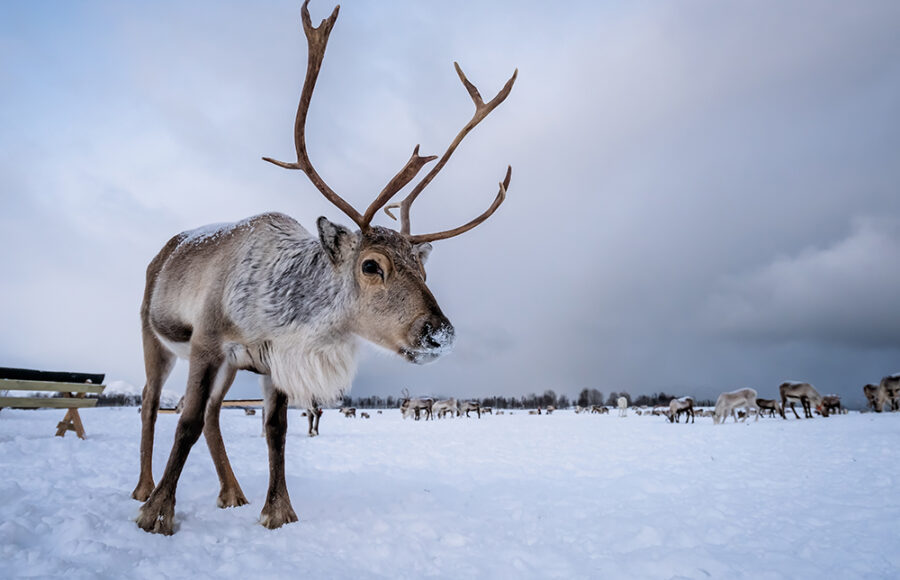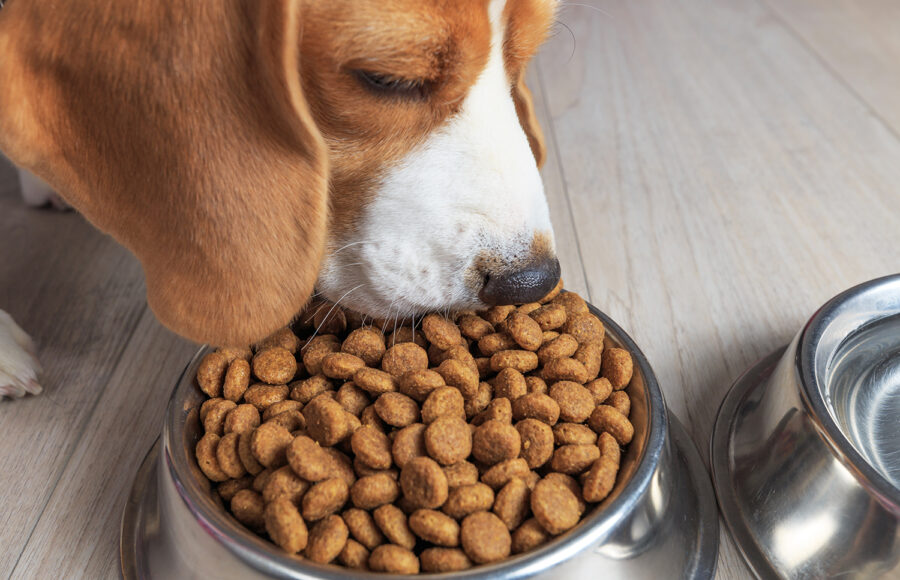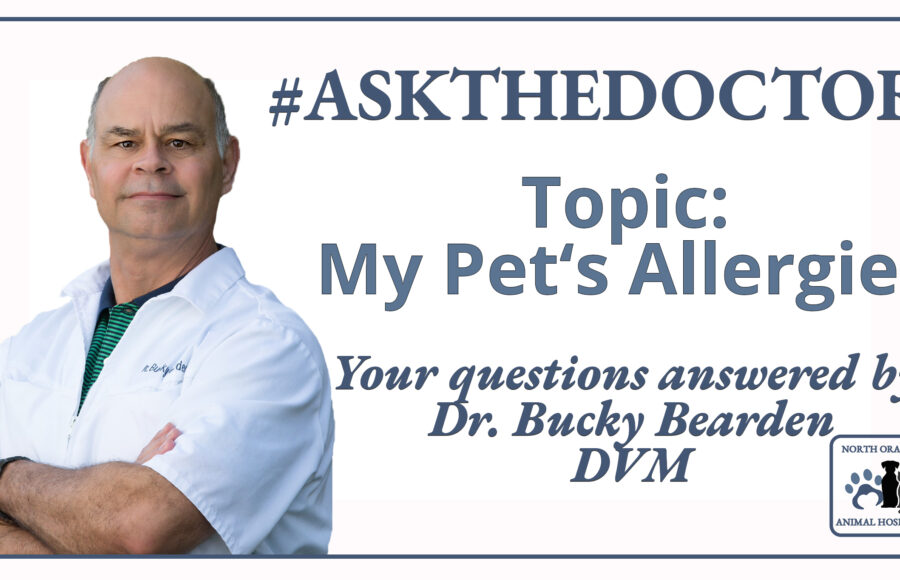
Santa’s Veterinarian Answers Kids’ Questions About Santa’s Reindeer
From AVMA.com
Q: Can reindeer really fly?
A: Most reindeer can’t fly, but Santa’s reindeer are special. Because they’re magic, they can fly very high and very far without getting tired.
Q: How does Santa find the reindeer for his sleigh?
A: Reindeer live in arctic and subarctic climates, and Santa spends some of his “off-time” traveling to evaluate reindeer and find the truly gifted ones that can pull his sleigh. I often get to travel with Santa to make sure the reindeer are healthy.
A: Reindeer live in arctic and subarctic climates, and Santa spends some of his “off-time” traveling to evaluate reindeer and find the truly gifted ones that can pull his sleigh. I often get to travel with Santa to make sure the reindeer are healthy.
Q: What does Santa feed them? How often do they eat?
A: Santa feeds them hay and reindeer feed, with the occasional graham cracker Christmas cookie as a treat. They also eat mosses, grass (when it’s not covered with snow, that is!) and lichens. They get to eat the hay any time they want, but they get their reindeer feed twice a day.
A: Santa feeds them hay and reindeer feed, with the occasional graham cracker Christmas cookie as a treat. They also eat mosses, grass (when it’s not covered with snow, that is!) and lichens. They get to eat the hay any time they want, but they get their reindeer feed twice a day.
Q: How much does a reindeer weigh?
A: The male reindeer usually weigh up to 450 pounds (205 kg), and the females weigh up to 250 pounds (114 kg). There have been some male reindeer that weighed in at 700 pounds (318 kg)!
A: The male reindeer usually weigh up to 450 pounds (205 kg), and the females weigh up to 250 pounds (114 kg). There have been some male reindeer that weighed in at 700 pounds (318 kg)!
Q: Do boy and girl reindeer grow antlers, or are they like deer in that only the boys grow antlers?
A: Both male and female reindeer grow antlers.
A: Both male and female reindeer grow antlers.
Q: How old is Rudolph?
A: Because he’s magic, nobody really knows how old Rudolph is. He may even be as old as Santa, but I can tell you he’s healthy and he can certainly keep up with the younger reindeer.
A: Because he’s magic, nobody really knows how old Rudolph is. He may even be as old as Santa, but I can tell you he’s healthy and he can certainly keep up with the younger reindeer.
Q: Does Rudolph’s nose really glow red?
A: Yes, but not all the time. You’ll often see him looking like all the other reindeer, with a black nose, because he’s learned how to control the glow.
A: Yes, but not all the time. You’ll often see him looking like all the other reindeer, with a black nose, because he’s learned how to control the glow.
Q: Why does Rudolph’s nose glow red?
A: Rudolph actually has a medical condition called nasus roseus (pronounced “NAY-suss ROSE-ee-us”) that makes his nose glow bright red like a light bulb. It doesn’t hurt, though, so don’t worry. And if you’re familiar with the story of Rudolph, you’ll know that his glowing nose makes it possible for Santa to complete his mission even in a blizzard or heavy fog.
A: Rudolph actually has a medical condition called nasus roseus (pronounced “NAY-suss ROSE-ee-us”) that makes his nose glow bright red like a light bulb. It doesn’t hurt, though, so don’t worry. And if you’re familiar with the story of Rudolph, you’ll know that his glowing nose makes it possible for Santa to complete his mission even in a blizzard or heavy fog.
Q: What are their teeth like? How many do they have? Are they sharp?
A: Like other ruminants (such as cattle, sheep, goats and deer), reindeer don’t have incisor teeth on their upper jaw. They have what’s called a ‘dental plate,’ which still allows them to bite off grass. Their premolar and molar teeth are made for grinding grass, hay, moss and lichen, and are very similar to the premolars and molars of grass-eating animals such as cows and horses. Reindeer have 34 teeth total, compared to 32 teeth in people.
A: Like other ruminants (such as cattle, sheep, goats and deer), reindeer don’t have incisor teeth on their upper jaw. They have what’s called a ‘dental plate,’ which still allows them to bite off grass. Their premolar and molar teeth are made for grinding grass, hay, moss and lichen, and are very similar to the premolars and molars of grass-eating animals such as cows and horses. Reindeer have 34 teeth total, compared to 32 teeth in people.
Their incisor teeth (the ones in the front of their mouths) are made for cutting and tearing grass, so they’re relatively sharp. Because their back teeth are made for grinding grass and roughage, they aren’t sharp like a dog’s or cat’s teeth, but they can still hurt if they bite you. They don’t have the sharp, pointy teeth that dogs and cats have.
Santa takes special care to make sure his reindeer’s teeth stay healthy by having me give them regular dental exams and cleanings, just like your pet should have.
Q: Do they have to live in a barn to be protected from the cold at the North Pole?
A: Reindeer are used to cold weather, and actually prefer it, but even reindeer need protection from the elements at the North Pole. They get to live in a cozy barn during the coldest weather. When they’re not in training for the sleigh pull, they get to spend time in a top-secret pasture area in a (slightly) warmer climate, where they get to have fun and graze on grass.
A: Reindeer are used to cold weather, and actually prefer it, but even reindeer need protection from the elements at the North Pole. They get to live in a cozy barn during the coldest weather. When they’re not in training for the sleigh pull, they get to spend time in a top-secret pasture area in a (slightly) warmer climate, where they get to have fun and graze on grass.
Q: Do they sleep during the day or at night? How do they stay up all night on Christmas?
A: Reindeer can sleep any time of the day, but Santa’s reindeer generally sleep at night so they can train during the day – after all, they need to stay in shape to pull the sleigh for that long ride on Christmas Eve! As their special trip gets closer, their schedules are altered so they can be as rested as possible. Santa definitely makes sure that his reindeer are healthy and 100% ready and able to make that long flight.
A: Reindeer can sleep any time of the day, but Santa’s reindeer generally sleep at night so they can train during the day – after all, they need to stay in shape to pull the sleigh for that long ride on Christmas Eve! As their special trip gets closer, their schedules are altered so they can be as rested as possible. Santa definitely makes sure that his reindeer are healthy and 100% ready and able to make that long flight.
Santa packs snacks and water for them so they don’t get too hungry or thirsty on the trip, and so they can keep their energy up. Plus, they get to catch short naps on the rooftops while Santa’s delivering the toys to all the good girls and boys.
Q: What are your duties as Santa’s Official Veterinarian?
A: My primary duty is to make sure the reindeer are healthy throughout the year. Here are some of the things I do:
A: My primary duty is to make sure the reindeer are healthy throughout the year. Here are some of the things I do:
- I examine the reindeer about a month before the scheduled flight to make sure that they’re healthy and that they’re not showing any signs of disease or other problems. It’s important that they don’t have any diseases they could give to other animals during their trip around the world, and they need to be healthy so they’re less likely to catch any diseases themselves on that flight.
- Once I’ve made sure they’re healthy, I fill out health certificates for the reindeer to make sure that Santa can legally fly them into the countries around the world and to prevent any unnecessary delays. The last thing we want is Santa getting stopped at a border, right?
- Right before the trip, I give them a once-over again to make sure their feet and legs are healthy enough to take off and land on the rooftops and that they’re still healthy and ready to go. I also do a nose-check on Rudolph to make sure he’s ready to light up in case it’s needed.
- During the trip, I’m on call in case there are any problems or emergencies that arise. Thankfully, Santa takes such good care of them that this has never happened.
- Once they’ve completed their trip and returned to their home base, I give each one of them a good exam to make sure they didn’t get any injuries and that they’re not dehydrated or weak. I then help the elves feed the reindeer their post-trip treats and food and get them settled into their comfy stalls so they can rest.
- In the spring and summer, I check up on them and give them the vaccines they need, as well as do any blood tests that are necessary.



